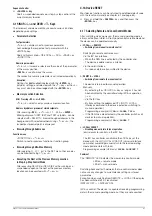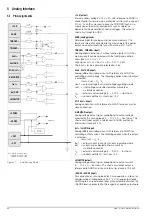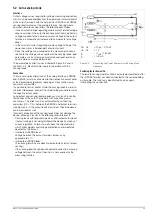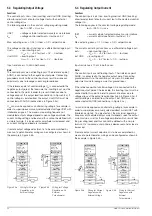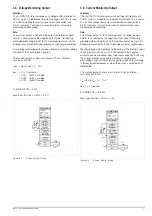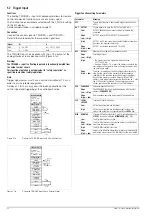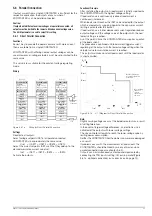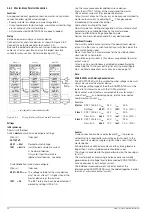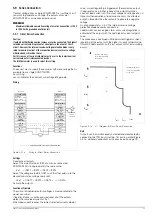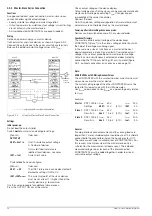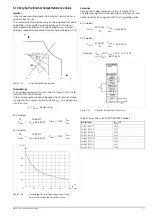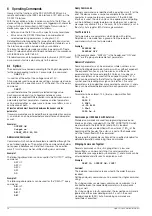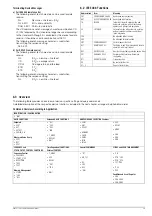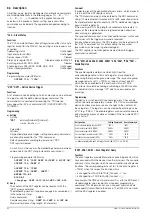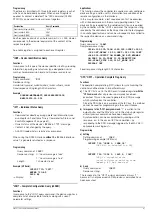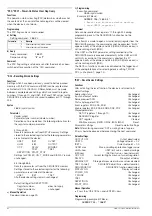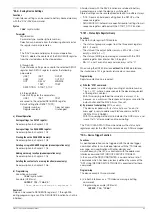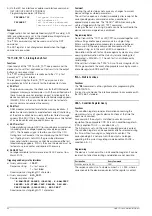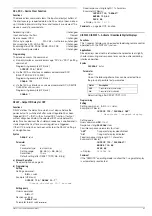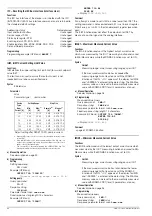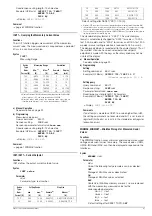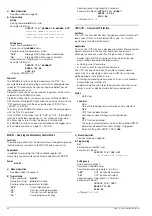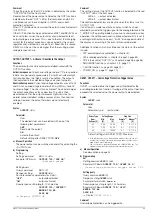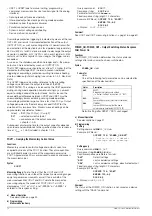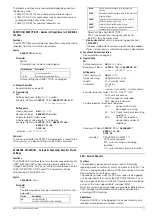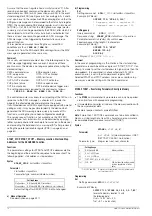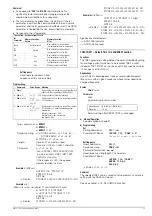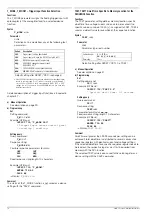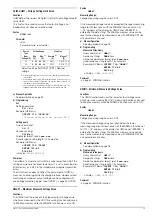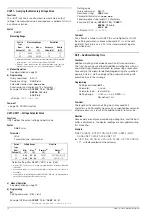
GMC-I Gossen-Metrawatt GmbH
61
Programming
The device is furnished with three 8-bit event registers, each of
which can be individually queried. When an event register is
queried, its content is deleted. The *CLS command (CLEAR
STATUS) can be used to clear all event registers.
Each response consists of a whole number 0
≤
n
≤
255, where
n
corresponds to the decimal equivalent of the content of the
respective register.
An enable register is assigned to each event register.
*IDN? – Device Identification Query
Functions
In response to this query, the device identifies itself by providing
information regarding manufacturer, type designation, serial
number, hardware revision level and firmware revision level.
Programming
Query command:
*IDN?
Response string:
manufacturer,type,serial_number,hardware_revision.software_revision
Fixed response string length: 49 characters
Example:
GOSSEN-METRAWATT,SSP62N052RU050P,
EM0000233,03.001
*IST? – Individual Status Query
Functions
– Command for directly querying parallel poll information (see
also chapter 6.2 and table “Query Command for Status and
Events Management” on page 87).
– Current status of the device’s IEEE488.1 “IST” message.
– Content is not changed by the query.
– An ASCII coded byte is returned as a response.
When using the RS232 interface
without
the IEEE488 interface,
value 1 is generally returned as a response.
Programming
Query command:
*IST?
Response string:
0 : “Local message is false”
1 : “Local message is true”
Length:
1 character, fixed
Example (HP Basic):
OUTPUT 713;"IST?"
ENTER 713;A$
DISP A$
→
Display:
0
*LRN? – Complete Configuration Query (LEARN)
Functions
In response to the *LRN? query command, the device supplies a
complete list of all adjustable functions along with current
parameter settings.
Applications
This function allows the controller to acquire manually configured
device settings, and to use this information for evaluation or for
remote configuration via the interface.
In this way, for example, a test sequence can first be executed
with all involved devices in the manual operating mode. The
device settings required for the individual test steps are queried
by the controller with the *LRN? command. The response string
received by the controller can then be entered to the test program
in an unchanged fashion, and can be subsequently transmitted to
the respective device as a command string.
Programming
Query command:
*LRN?
Sample response string:
ULIM +035.000;ILIM +050.000;OVSET +050.0
;OCP OFF;DELAY 12.00;USET +021.300;ISET
+048.000;OUTPUT ON;POWER_ON RST;MINMAX
ON;TSET 00.10;TDEF 10.00;REPETITION
000;START_STOP 020,115;T_MODE OUT;
DISPLAY OFF
Fixed response string length: 202 characters
*OPC, *OPC? – Operation Complete Flag Query
Functions
The operation complete flag (OPC) allows for synchronizing the
controller and the device in two different ways:
a)
The OPC bit is set in the ESR event standard register
with the
*OPC command
after all previous commands have been
executed. This can be used to generate an SRQ message
which synchronizes the controller.
Since the SRQ line is only available at the IEC bus, this method
cannot be used for programming via the serial interface.
b) In response to the *OPC? query command,
“1” is written to the
output buffer and the MAV bit is set in the status byte register
after all previous commands have been executed.
Synchronization can be accomplished by reading out this
response, or – in the case of IEC bus operation – by
responding to the SRQ message triggered by the MAV bit, if
appropriate masking exists.
Programming
a) Setting
Setting command:
*OPC
Programming example (HP Basic):
OUTPUT 712;"*ESE 1; *SRE 32"
!OPC bit is enabled for SRQ
:
:
OUTPUT 712;"*CLS 1; *RCL 2; *OPC"
!SRQ is signaled after
!recalled device setting from
!memory # 2 has been set
b) Query
Query command:
*OPC?
Response string:
1
The response to the *OPC? query command is always “1”,
because it is not processed until all previous commands have
been executed.
Designation
Query Command
Event standard register (ESR)
*ESR?
Event register A (ERA)
ERA?
Event register B (ERB)
ERB?

